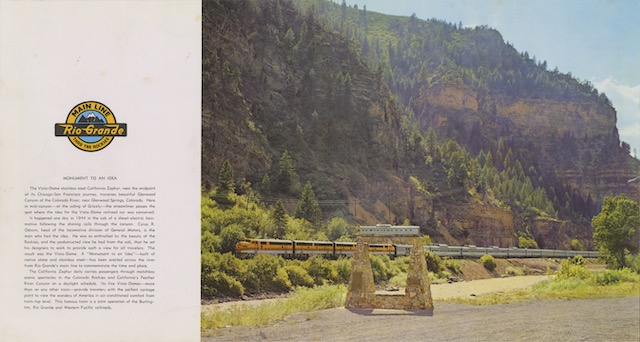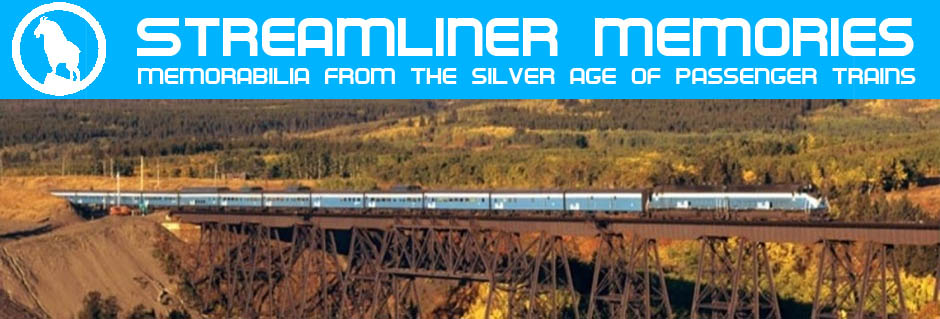The Rio Grande installed this “monument to an idea” in Glenwood Canyon in 1950, a year after the inaugural run of the California Zephyr. As much as it was a monument to the dome car, it was also a monument to the whole idea of post-war trains: pretty to look at, comfortable to ride, full of exciting variety, but not very fast. This was partly because of the Interstate Commerce Commission rule limiting train speeds, but also because of the changing travel market, most trains substituted comfort for speed.
 Click image to download a 1.2-MB PDF of this menu.
Click image to download a 1.2-MB PDF of this menu.
This was certainly true for domeliners such as the Twin Zephyrs, California Zephyr, Hiawathas, North Coast Limited, Empire Builder, City of Portland, and City of Los Angeles. Between the domes, diners, cafe cars, and lounges, many of these trains had almost as many non-revenue seats as revenue seats, meaning most passengers could be out of their seats or rooms at any given moment and find someplace interesting to go.
Many people remember this as a golden age of passenger trains. When asked why trains were better than jet airliners, they will inevitably say that train passengers could get up and walk around. But this was only due to an ultimately failed effort by the railroads to compete with air travel. Before the war, coach and tourist sleeper passengers weren’t encouraged to walk around the train, and even first-class passengers usually had few places to walk except the diner and observation car, and then only on the few trains that had them.
This menu is dated August, 1958. It doesn’t say what train it was used on, but it was probably the Prospector, which followed the same Denver-Salt Lake City route as the California Zephyr but did it overnight, or the Royal Gorge, when went through the Royal Gorge during daylight but got to Glenwood Canyon, where this photo was taken, at dusk or after dark, depending on the time of year. It wouldn’t have been used on the California Zephyr, which had its own menus.
The a la carte side of this menu had four entrées: trout ($2.25), spaghetti with meat ball ($1.60), roast duck ($1.60), and bacon & eggs ($2.50). Except for the bacon & eggs, all of them were also on the table d’hôte side for about 75¢ more. Two other entrées on the table d’hôte side — veal cutlets ($2.75) and broiled steak ($3.75) — weren’t available a la carte. Instead of the usual beans or peas, vegetables included acorn squash and creamed cauliflower.
This menu helps fill in a gap in my Rio Grande menu series. My collection includes menus with color photos up to 1956 and menus with wraparound photos from 1967, but nothing in between. This menu shows that the Rio Grande began using wraparound photos at least as early as 1958, and probably continued to do so through the late 1960s. Somewhere around 1971, when Amtrak took over most other passenger trains, Rio Grande switched to orange-and-black menus without any cover photos.
